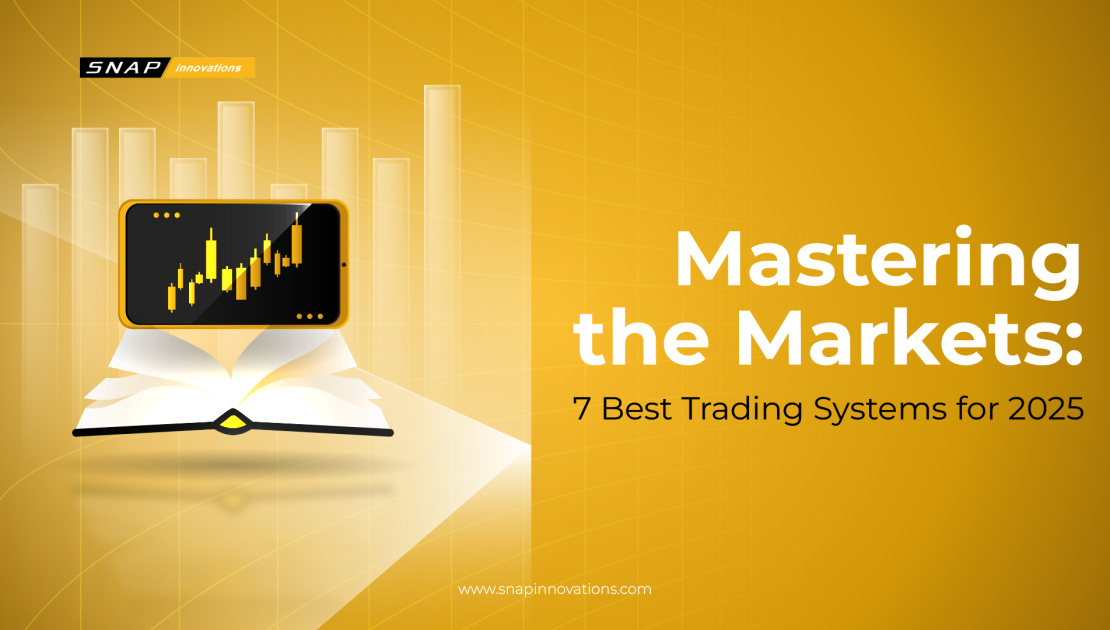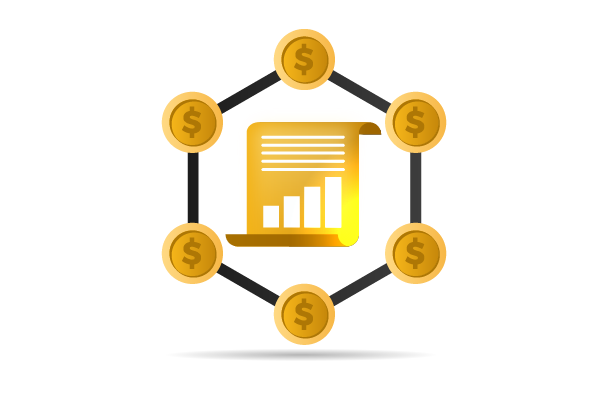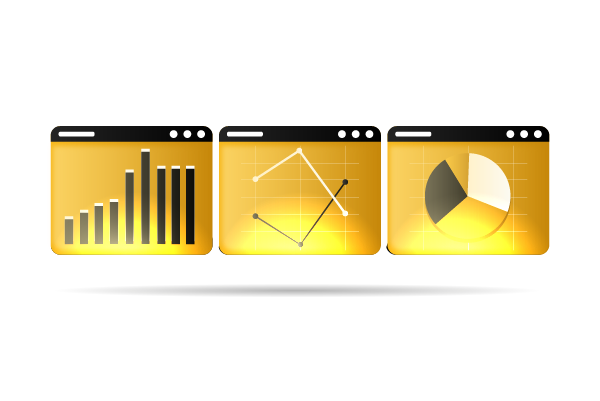Top 10 AI Trading Tools for Traders to Improve Decision Making in 2026

In a market where prices can change in milliseconds, making the right decision at the right time is no longer just about experience, it’s about intelligence. In 2026, AI trading tools have transformed the way traders analyze markets, detect opportunities, and manage risk, giving them a powerful edge in an increasingly competitive environment.
By processing vast amounts of real-time data and removing emotional bias, these tools help traders act with speed, precision, and confidence. This article explores the top 10 AI trading tools for 2026 that are redefining how traders improve decision making across stocks, forex, and crypto markets.
What Are AI Trading Tools and How Do They Work?

AI trading tools are software solutions that use artificial intelligence and machine learning to analyze financial market data, identify patterns, and support smarter trading decisions. These tools process large amounts of information such as price movements, volume, indicators, and market behavior much faster than humans, helping traders respond quickly and objectively to changing market conditions.
AI trading tools typically work by:
- Collecting market data from multiple sources in real time
- Analyzing historical and live data using AI and machine learning models
- Identifying trends, patterns, and anomalies that may signal opportunities or risks
- Generating insights, alerts, or trade signals based on probability and logic
- Learning from new data to improve accuracy over time
- Assisting or automating trade execution based on predefined rules
By combining speed, data analysis, and adaptive learning, AI trading tools help traders make more informed, consistent, and disciplined decisions in modern financial markets.
Also read: Top 10+ Global Market Making Firms Redefining Trading Efficiency in 2026
Top 10 AI Trading Tools for Traders to Improve Decision Making in 2026
 This comprehensive guide explores the Top 10 AI Trading Tools for Traders to Improve Decision Making in 2026, describing what each tool does, how it leverages AI, and why it matters for traders who want smarter, faster, and more confident decisions.
This comprehensive guide explores the Top 10 AI Trading Tools for Traders to Improve Decision Making in 2026, describing what each tool does, how it leverages AI, and why it matters for traders who want smarter, faster, and more confident decisions.
1. Snap Innovations
Snap Innovations combines behavioral analytics, machine intelligence, and contextual risk scoring to help traders identify patterns beyond traditional indicators. Rather than relying solely on technical signals, Snap Innovations analyzes behavior over time to reveal signals that precede market shifts.
Key Features
- Behavioral pattern detection that identifies non-obvious trends
- Contextual risk scoring for assets and trading setups
- AI-powered alerts tied to changing market conditions
- Customizable dashboards for personalized insights
Snap Innovations’ strength lies in its ability to interpret context rather than just raw price data. For traders dealing with complex or volatile markets, understanding how behavior and sentiment influence price movement enhances decision quality and reduces emotional bias.
2. Trade Ideas
Trade Ideas is a powerful trading tool that leverages AI to generate potential trading strategies and backtests them against historical data. The platform uses machine learning to simulate dozens of market scenarios and identify strategies that have historically yielded positive returns.
Key Features
- AI-generated trade ideas based on historical performance
- Real-time signal alerts when conditions match favorable patterns
- Automated backtesting with visual performance analysis
- Strategy personalization based on risk tolerance and asset preferences
Trade Ideas is particularly useful for active traders and technical analysts who need data-driven strategy development. By automating idea generation and performance validation, it eliminates guesswork and accelerates strategy refinement.
3. Tickeron
Tickeron uses AI-powered pattern recognition to identify high-probability trade opportunities across stocks, indices, and ETFs. Its AI models uncover repeating technical and chart patterns that may be overlooked by traditional analysis.
Key Features
- AI pattern recognition across multiple timeframes
- Predictive indicators based on historical similarity matches
- Portfolio scanning tools to monitor multiple assets simultaneously
- Trade forecasting charts with confidence levels
Tickeron’s predictive focus helps traders identify setups with statistically significant outcomes. It’s especially valuable for swing traders and position traders who rely on historical patterns to project future price movements.
4. TrendSpider
TrendSpider enhances technical analysis with AI automation, saving traders time and increasing precision. The platform automates key tasks such as trendline drawing, indicator calculation, and support/resistance detection, all with machine accuracy.
Key Features
- Automated trendline and Fibonacci detection
- Multi-timeframe analysis with synchronized signals
- AI-driven alerting based on technical criteria
- Backtesting and strategy testing with custom rule sets
TrendSpider helps traders eliminate manual charting tasks and removes inconsistency in technical interpretation. Its automation and multi-timeframe focus create a structured, rigorous approach to analysis that is difficult to replicate manually.
5. QuantConnect
QuantConnect is a cloud-based platform that allows developers and quantitative traders to build, backtest, and deploy algorithmic trading strategies in multiple markets. It supports AI and machine learning models that can be integrated into automated systems.
Key Features
- Algorithmic strategy development with support for multiple languages
- Backtesting on extensive historical data sets
- Integration with machine learning libraries for model training
- Deployment to live or simulated markets
QuantConnect empowers traders who want to go beyond manual systems and leverage algorithmic execution. Its machine learning capabilities allow strategies to adapt to new data, helping traders create systems that evolve with the market.
6. AlgosOne
AlgosOne combines advanced signal processing with AI models to deliver intelligent trade signals across multiple assets. The platform focuses on generating signals with defined risk profiles and filters to reduce noise.
Key Features
- Signal generation using AI and statistical models
- Risk-adjusted signal scoring
- Cross-asset coverage including forex, equities, and commodities
- Real-time alerting and signal refinement
AlgosOne prioritizes signal quality over quantity. Traders benefit from signals that are evaluated against risk thresholds and real-world performance expectations, making it easier to integrate automated insights into real strategies.
7. WunderTrading
WunderTrading specializes in AI-assisted automation for cryptocurrency markets. It allows traders to build and deploy bots that act on predefined logic or machine-generated signals across exchanges.
Key Features
- Bot automation for crypto trading
- Strategy marketplace with community-generated models
- Integration with popular exchanges
- Performance analytics for bot evaluation
For crypto traders facing 24/7 markets, WunderTrading’s automation reduces the need for constant monitoring. By combining community strategies with AI enhancements, it provides scalable ways to execute strategies around the clock.
8. Composer
Composer offers a unique approach to trading strategy development by allowing users to build rules and logic using natural language. Its AI then translates these rules into executable strategies, making complex algorithmic logic more accessible.
Key Features
- Natural language strategy creation
- AI-translated rules into executable logic
- Backtesting and optimization tools
- Cross-platform deployment support
Composer bridges the gap between idea and execution for traders who may not program but still want algorithmic precision. Its natural language processing capabilities turn intuitive insights into data-driven strategies.
9. Capitalise.ai
Capitalise.ai focuses on helping traders convert their trading ideas into automated rules that can be tested and deployed without coding. Its AI engine advises on optimization and risk adjustments.
Key Features
- Rule-based automation triggered by market conditions
- Natural language and visual rule input
- AI recommendations for optimization
- Simulation and strategy testing
Capitalise.ai makes automation accessible for traders with limited coding skills. Its combination of rule logic and AI optimization helps traders stay disciplined and execute ideas consistently.
10. Deeptracker AI
Deeptracker AI employs deep learning neural networks to analyze vast datasets and uncover non-linear patterns that traditional models might miss. It excels in risk detection and anomaly identification.
Key Features
- Deep neural network analytics
- Pattern recognition beyond conventional indicators
- Anomaly detection for risk signals
- Adaptive learning models that evolve with new data
Deeptracker AI’s deep learning models uncover complex relationships in price and volume data that other tools might overlook. This makes it an excellent fit for traders focused on advanced risk control and pattern insights that go beyond conventional technical analysis.
Key Benefits of Using AI Tools in Trading

AI tools have become an essential part of modern trading because they help traders analyze markets faster, manage risk more effectively, and make decisions based on data rather than emotions. By using artificial intelligence and machine learning, traders can gain deeper insights and improve consistency across different market conditions.
1. Faster and More Accurate Market Analysis
AI trading tools can process massive amounts of market data in seconds, something that would take humans hours or even days to analyze manually.
Benefits include:
- Real-time analysis of price, volume, and indicators
- Faster identification of trends and market shifts
- Reduced chance of missing short-term trading opportunities
- More precise signals based on data patterns
This speed advantage is especially valuable in volatile markets where timing is critical.
2. Improved Decision Making with Data-Driven Insights
One of the biggest advantages of AI tools is their ability to remove emotional bias from trading decisions. AI evaluates markets objectively using logic and probability.
Key advantages:
- Decisions based on statistical models instead of emotions
- Clear signals backed by historical data
- Reduced overtrading and impulsive entries
- More disciplined execution of trading strategies
As a result, traders can make more consistent and rational decisions over time.
3. Advanced Pattern Recognition
AI tools can identify complex patterns and relationships in market data that traditional indicators often fail to detect.
How this helps traders:
- Detection of hidden or non-linear market patterns
- Recognition of repeating setups across different timeframes
- Early signals of trend reversals or breakouts
- Improved accuracy compared to manual chart analysis
This capability gives traders a deeper understanding of market behavior.
Also read: Top 10 AI Driven Cryptocurrencies to Consider in 2026
4. Better Risk Management and Trade Control
Risk management is a critical part of trading, and AI tools help traders control risk more effectively through real-time monitoring and alerts.
AI-powered risk benefits include:
- Automated risk scoring for trades or portfolios
- Early warnings for abnormal price movements
- Identification of high-risk market conditions
- Support for stop-loss and position sizing strategies
By improving risk awareness, AI tools help protect capital and reduce large losses.
5. Consistent Strategy Execution
AI tools allow traders to follow predefined rules and strategies without deviation, helping maintain consistency over long periods.
Consistency advantages:
- Automated execution based on fixed rules
- Reduced impact of fear, greed, or hesitation
- Reliable performance tracking and evaluation
- Easier strategy testing and optimization
This is especially useful for traders who struggle with emotional discipline.
6. Time Efficiency and Productivity
By automating analysis, monitoring, and execution, AI tools free up valuable time for traders.
Time-saving benefits:
- Less manual charting and screening
- Automated alerts instead of constant market watching
- Ability to monitor multiple markets at once
- More time for strategy development and learning
This makes AI tools ideal for both full-time traders and those trading alongside other commitments.
7. Adaptability to Changing Market Conditions
Many AI tools use machine learning, allowing them to adapt as market conditions change.
Adaptive advantages include:
- Continuous learning from new market data
- Improved performance over time
- Better response to volatility and market shifts
- Flexibility across different asset classes
This adaptability helps traders stay competitive in dynamic and unpredictable markets.
How to Choose the Right AI Trading Tool for Your Trading Style

Choosing the right AI trading tool depends on your trading goals, experience level, and the markets you trade. Different AI tools are designed for different purposes, such as analysis, automation, or risk management. By matching the tool’s features with your personal trading style, you can improve decision making and avoid unnecessary complexity.
When selecting an AI trading tool, consider the following factors:
- Trading style (day trading, swing trading, or long-term investing)
- Market focus (stocks, forex, crypto, or multiple asset classes)
- Level of automation (signals only or fully automated execution)
- Ease of use based on your technical skills and experience
- Risk management features such as alerts and position control
- Customization options to adjust strategies and indicators
- Time commitment required for monitoring and managing trades
By choosing an AI tool that aligns with your strategy and workflow, you can trade more efficiently, stay disciplined, and make better-informed decisions in dynamic market conditions.
Conclusion
As financial markets continue to evolve in 2026, AI trading tools have become essential for traders who want to stay competitive and make smarter decisions. By combining advanced data analysis, pattern recognition, and automation, these tools help reduce emotional bias, improve timing, and strengthen risk management across different trading styles.
Whether you are a beginner seeking guidance or an advanced trader optimizing complex strategies, choosing the right AI tool can significantly enhance your trading performance. Ultimately, AI does not replace the trader, it empowers them to trade with greater confidence, consistency, and clarity in an increasingly data-driven market.
Muhammad Ermanja
I am a specialist in the financial technology industry, focusing on trading technology solutions and brokerage infrastructure. With over six years of experience, I consistently explore the development, implementation, and integration of multi-asset trading systems, low-latency platforms, and brokerage automation tools. My insights revolve around how technology can enhance execution speed, risk management, and overall operational efficiency for brokers and professional traders. Every analysis and article I create is grounded in research and real-world industry challenges, aiming to help financial institutions and trading firms build scalable, secure, and high-performing systems in the rapidly evolving landscape of modern finance.

